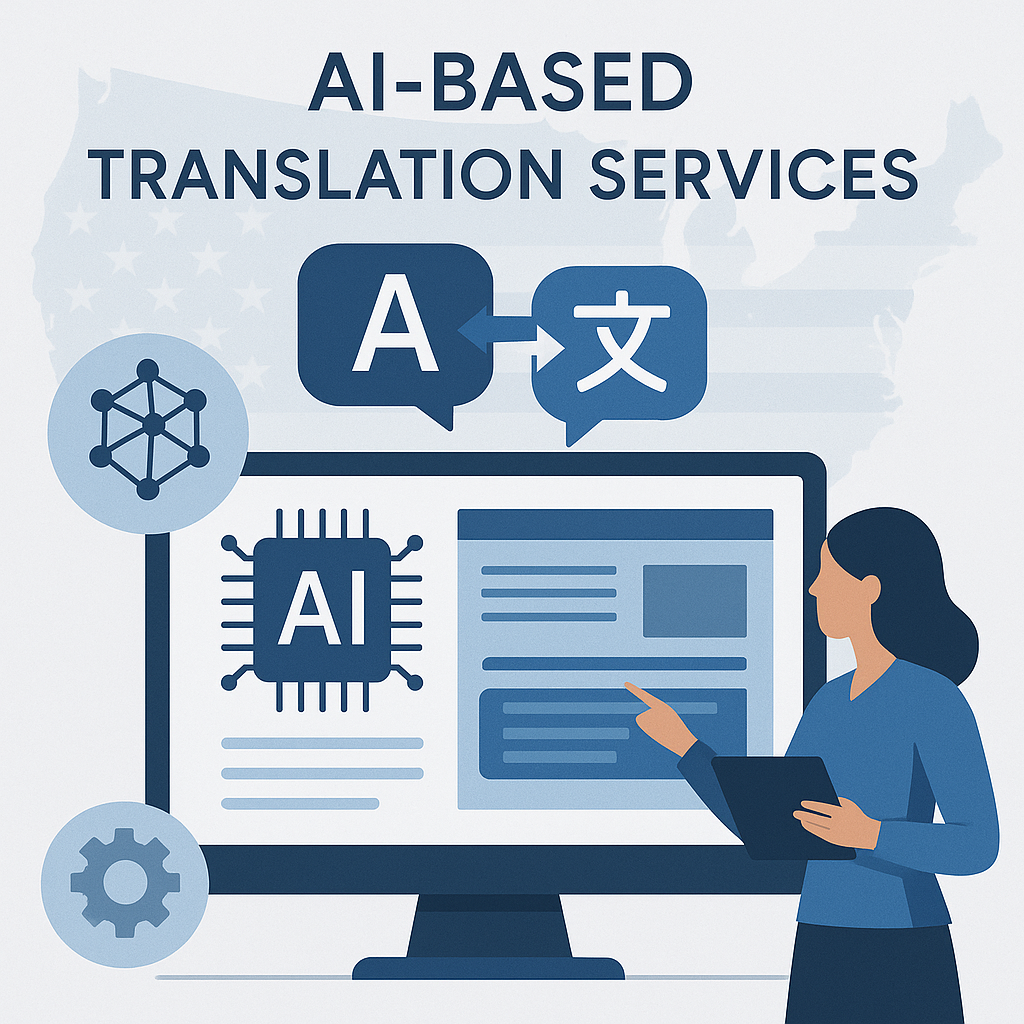
AI-Based Translation Services: The Ultimate Guide for 2025
In today’s globalized world, AI-based translation services have become essential for businesses, travelers, educators, and anyone needing to bridge language barriers. With rapid advancements in artificial intelligence and natural language processing, these services are more accurate, accessible, and affordable than ever before. This comprehensive guide explores the latest trends, top providers, benefits, and practical tips for leveraging AI-powered translation in 2025.
What Are AI-Based Translation Services?
AI-based translation services use artificial intelligence, particularly machine learning and neural networks, to automatically translate text, speech, or even images from one language to another. Unlike traditional rule-based or human-only translation, AI-driven solutions can process vast amounts of data, learn from context, and deliver real-time results.
How Do AI Translation Services Work?
AI translation platforms typically follow these steps:
- Input Processing: The user submits text, speech, or an image.
- Language Detection: The system identifies the source language.
- Neural Machine Translation: AI models analyze context, grammar, and semantics to generate accurate translations.
- Output Delivery: The translated content is presented in the target language, often with options for voice or text output.
TIP: AI-based translation services are continually improving as they learn from millions of real-world examples, making them more reliable each year.
Top 10 AI-Based Translation Services in the U.S. for 2025
Choosing the right translation service can be overwhelming. Here’s a ranked list of the best AI-powered translation platforms available in the United States this year:
- Google Translate
- DeepL Translator
- Microsoft Translator
- Amazon Translate
- IBM Watson Language Translator
- Reverso
- SYSTRAN Translate
- Smartling
- Unbabel
- Papago
Comparison Table: Leading AI-Based Translation Services (2025)
| Rank | Service Name | Languages Supported | Real-Time Speech | Document Translation | Business Integration | Free Tier Available |
|---|---|---|---|---|---|---|
| 1 | Google Translate | 130+ | ✅ | ✅ | ✅ | ✅ |
| 2 | DeepL Translator | 30+ | ❌ | ✅ | ✅ | ✅ |
| 3 | Microsoft Translator | 100+ | ✅ | ✅ | ✅ | ✅ |
| 4 | Amazon Translate | 75+ | ❌ | ✅ | ✅ | ✅ |
| 5 | IBM Watson Translator | 50+ | ❌ | ✅ | ✅ | ✅ |
| 6 | Reverso | 15+ | ❌ | ✅ | ✅ | ✅ |
| 7 | SYSTRAN Translate | 55+ | ✅ | ✅ | ✅ | ✅ |
| 8 | Smartling | 20+ | ❌ | ✅ | ✅ | ❌ |
| 9 | Unbabel | 30+ | ❌ | ✅ | ✅ | ❌ |
| 10 | Papago | 13+ | ✅ | ✅ | ❌ | ✅ |
Key Benefits of AI-Based Translation Services in 2025
1. Speed and Scalability 🚀
AI translation tools can process large volumes of content in seconds, making them ideal for businesses with global audiences or urgent communication needs.
2. Cost-Effectiveness 💸
Compared to hiring human translators for every task, AI-based solutions significantly reduce costs, especially for routine or high-volume translations.
3. Improved Accuracy and Contextual Understanding 📈
Modern AI models use deep learning to understand context, idioms, and cultural nuances, resulting in more natural and accurate translations.
4. Multimodal Capabilities 📷🎤
Many services now support not just text, but also speech and image translation, enabling seamless communication across different media.
5. Integration with Business Tools 🏢
AI translation APIs can be embedded into websites, apps, customer support platforms, and content management systems for automated, real-time translation.
TIP: For sensitive or industry-specific content, consider services that offer customizable AI models or human-in-the-loop review for maximum accuracy.
Common Use Cases for AI-Based Translation Services
Business Expansion and Localization
Companies use AI translation to localize websites, marketing materials, and product documentation, reaching new markets efficiently.
Customer Support and Chatbots
AI-powered translation enables multilingual customer service, allowing support teams to assist users in their preferred language.
Travel and Tourism
Travelers rely on mobile translation apps for real-time communication, navigation, and understanding local information.
Education and E-Learning
Educators and students benefit from AI translation for accessing global research, collaborating internationally, and language learning.
Healthcare Communication
Hospitals and clinics use AI translation to communicate with patients from diverse backgrounds, improving care and compliance.
How to Choose the Best AI-Based Translation Service for Your Needs
When selecting an AI translation platform, consider the following factors:
- Language Coverage: Ensure the service supports all required languages.
- Accuracy and Context: Look for platforms with advanced neural models and positive user reviews.
- Integration Options: Check for APIs or plugins compatible with your existing tools.
- Data Security: Prioritize services with strong privacy and compliance standards.
- Pricing: Compare free tiers, subscription plans, and pay-as-you-go options.
TIP: Test multiple services with your actual content to evaluate translation quality before committing to a paid plan.
The Future of AI-Based Translation Services in the U.S.
In 2025, AI-based translation services are poised for even greater innovation. Expect to see:
- Real-time, cross-platform translation in AR/VR environments
- Personalized translation models tailored to individual users or industries
- Enhanced support for low-resource and indigenous languages
- Seamless integration with voice assistants and IoT devices
These advancements will further break down language barriers and foster global collaboration.
Conclusion
AI-based translation services have revolutionized the way individuals and organizations communicate across languages. In 2025, these platforms offer unprecedented speed, accuracy, and versatility, supporting everything from business expansion to healthcare and education. By understanding the top providers, key benefits, and practical considerations, U.S. users can confidently choose the right AI translation solution for their needs. As artificial intelligence continues to evolve, expect even more powerful and intuitive translation tools that make the world more connected than ever before.